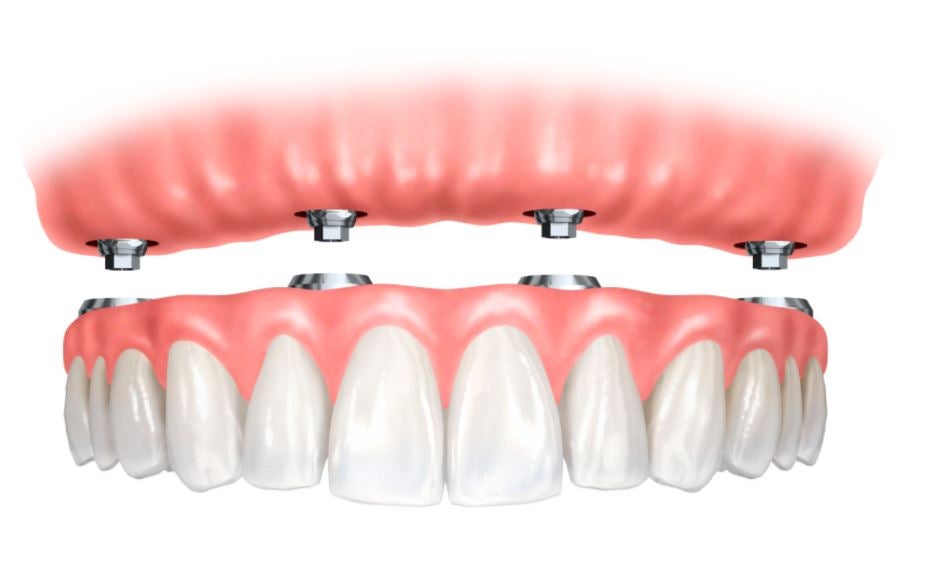Not known Details About Dental Sense
The Dental Sense PDFs
Table of ContentsAll About Dental SenseUnknown Facts About Dental SenseDental Sense Fundamentals ExplainedThe 20-Second Trick For Dental Sense
are clinical tools surgically implanted into the jaw to recover a person's ability to eat or their appearance. They supply support for artificial (phony) teeth, such as crowns, bridges, or dentures. When a tooth is shed because of injury or illness, an individual can experience complications such as rapid bone loss, defective speech, or modifications to chewing patterns that result in pain.Dental implant systems include an oral implant body and oral implant abutment and may likewise consist of an abutment fixation screw. Professional teeth whitening. The oral implant body is surgically placed in the jawbone in location of the tooth's root. The oral implant joint is typically attached to the implant body by the joint addiction screw and extends with periodontals into the mouth to support the attached synthetic teeth
(https://matthewmusic33101.wixsite.com/dental-sense/post/dental-veneers-cost-kids-dental-and-dental-implant-vs-bridge-what-you-need-to-know)Structure of The Oral Implant System choosing oral implants, talk to your oral provider concerning the prospective benefits and threats, and whether you are a candidate for the procedure. Points to think about: Your overall health is a vital factor in identifying whether you are a great candidate for dental implants, how much time it will require to heal, and the length of time the implant may remain in location.
Cigarette smoking might influence the healing process and decrease the long-term success of the implant. The recovery process for the dental implant body might take numerous months or longer, during which time you typically have a short-lived abutment in location of the tooth. the dental implant treatment: Thoroughly adhere to the oral health guidelines provided to you by your dental provider.
Little Known Facts About Dental Sense.
Implant failing can lead to the requirement for an additional surgery to fix or replace the implant system. Restores the capacity to eat Restores aesthetic look Helps maintain the jawbone from shrinking because of bone loss Maintains the wellness of the bordering bone and gums Helps maintain adjacent (neighboring) teeth stable Improves lifestyle Damage to bordering all-natural teeth throughout implant placement Injury to the surrounding tissues during surgical procedure, such as sinus opening Injury throughout surgical treatment (for instance, fracture of bordering jawbone) Insufficient function, such as seeming like the teeth do not attack together usually A sensation that the tooth hangs or turning in location arising from an abutment screw loosening Implant body failure (looseness of the implant body) because of systemic infection, which may be most likely in clients with unchecked diabetes because of local infection in bone and gum tissues sustaining the implant body because of delayed healing, which might be most likely in people that smoke Problem cleansing the gum tissues around the implant, resulting in bad oral health Untreated gum condition Post-surgical feeling numb due to nerve impingement or damages Constantly inform healthcare providers and imaging service technicians that you have dental implants before any magnetic vibration imaging (MRI) or x-ray treatments.
FDA is not mindful of any kind of negative events reported for MRI or x-ray procedures with oral implants. Oral implants systems are normally constructed from products that adhere to international consensus standards of the International Organization for Standardization (ISO) or ASTM International. These criteria have details of what makes a safe product.

A dental implant is a framework that replaces a missing tooth. With screw-like gadgets, the surgeon inserts an implant into the jawbone, and it acts as an anchor for an artificial tooth, called a crown.
Top Guidelines Of Dental Sense
Some people are not qualified for oral implant surgical treatment. It is for dental doctors to operate on individuals with: acute illnessuncontrollable metabolic diseasebone or soft cells disease or infectionIf these problems are settled, an individual can have the surgical treatment. In, dental specialists refrain from operating individuals with: If people with any of the above undergo oral implant surgical treatment, there is a higher risk of the implant stopping working.

Oral dental implant surgical treatment is a customized process. It's not read the article the same for everybody. Yet the adhering to offers a basic overview of what you can expect your dental expert, dental specialist, periodontist or prosthodontist to do: Position the dental implant operatively. Provide you time to heal. Affix the article and last crown, bridge or denture.
Next, your specialist will meticulously place the dental implant right into your jaw. Your cosmetic surgeon will rearrange your periodontals and shut the cut with stitches. If your dental implant is near the front of your mouth, your dental expert will certainly make a short-term tooth for you to use up until you recover. This way, you won't have a space in your smile while you recover.
The Ultimate Guide To Dental Sense
During the recovery phase, your jawbone should fuse to the oral implant. This process can take anywhere from 3 to 9 months.
Once your dental implant heals, your dental expert can attach the joint (tiny port blog post) and your final repair (crown, bridge or denture). This typically takes concerning one hour to complete and may call for a second minor surgery. You shouldn't really feel any discomfort throughout your dental implant treatment due to the fact that your supplier will utilize drug to numb your gums.